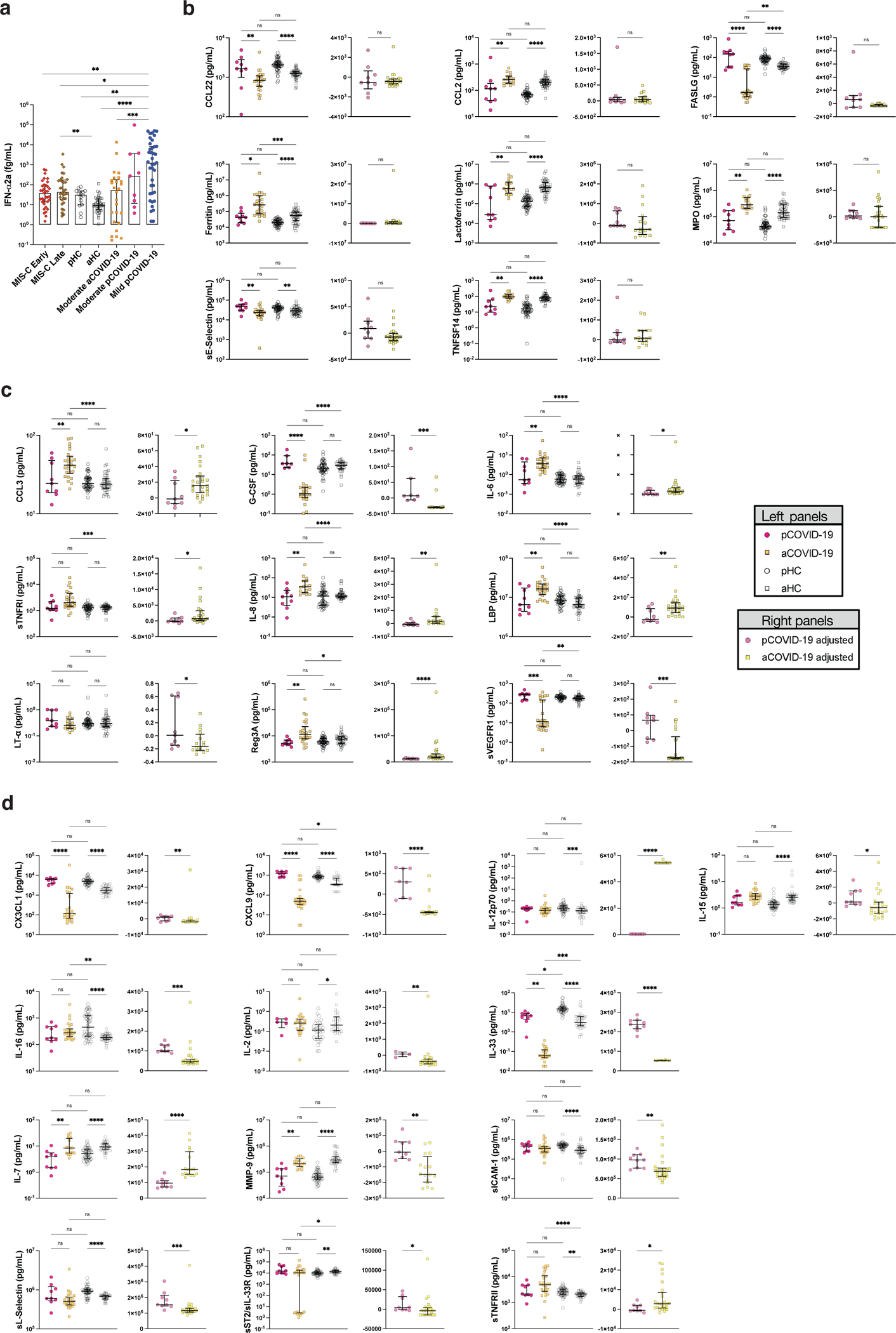Extended Data Fig. 1: Differences in soluble biomarker levels among pediatric (pCOVID-19), adult COVID-19 (aCOVID-19), and pediatric and adult healthy controls (pHC, aHC).

a, Children with mild pCOVID-19 (n=39) in the first 7 days since symptom onset have significantly higher IFN-⍺2a levels compared to healthy pediatric controls [pHC] (n=16), healthy adult controls [aHC] (n=40), children with MIS-C (both in the first 7 days since hospitalization: MIS-C Early, n=36) and later in the course of the disease (MIS-C Late, n=32)), and adults with moderate acute COVID-19 (aCOVID-19, n=26). Maxima of box plots represent median values, and bars represent interquartile range. Statistical analysis was performed with Kruskal-Wallis test with adjustment for multiple comparisons.
b-d, Comparison of soluble biomarkers measured within 7 days of symptom onset in children (n=9) and within 7 days of admission in adults (n=26) with moderate acute COVID-19, as well as pHC (n=53) and aHC (n=45), both unadjusted (left graphs, Kruskal-Wallis test) and adjusted for the baseline differences in healthy subjects of the same age group (right graphs, two-tailed Mann-Whitney test). Bars represent median values and interquartile range.
b, Biomarkers whose serum levels were significantly different in pHC and aHC, but not in diseased subjects, indicating that the difference of unadjusted blood levels observed between pCOVID-19 and aCOVID-19 is probably driven by age, rather than COVID-19 itself.
c, Biomarkers that differed significantly in pCOVID-19 vs. aCOVID-19, but not between pHC and aHC, suggesting that the nature and severity of inflammatory responses induced by SARS-CoV-2 infection differentially affects patients of different age.
d, Biomarkers for which both age and SARS-CoV-2 infection independently contributed to differences in levels in children and adults. In all panels, significance is indicated as follows: *, P<0.05; **, P<0.01; ***, P<0.001; ****, P<0.0001.
